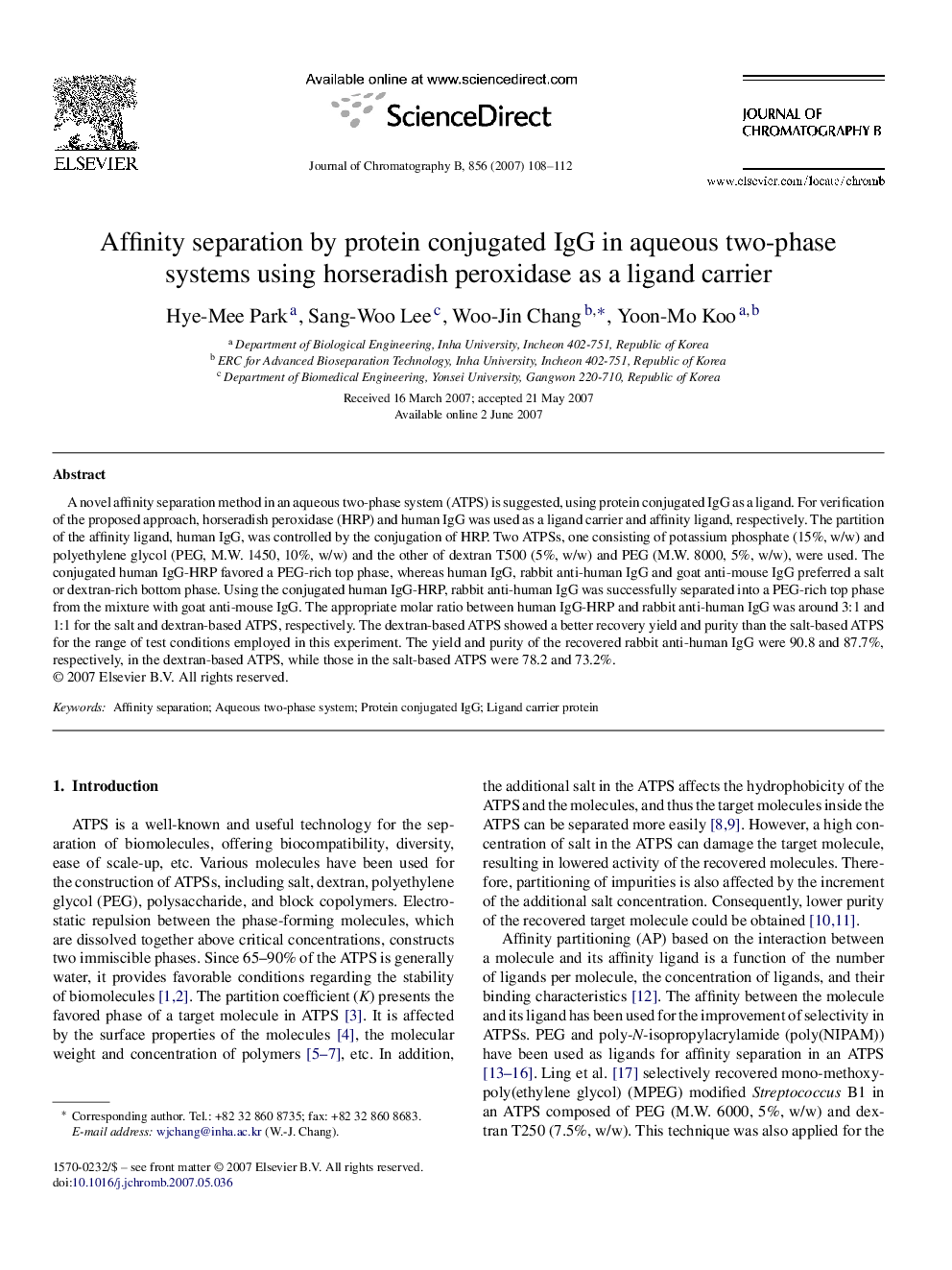| Article ID | Journal | Published Year | Pages | File Type |
|---|---|---|---|---|
| 1217714 | Journal of Chromatography B | 2007 | 5 Pages |
A novel affinity separation method in an aqueous two-phase system (ATPS) is suggested, using protein conjugated IgG as a ligand. For verification of the proposed approach, horseradish peroxidase (HRP) and human IgG was used as a ligand carrier and affinity ligand, respectively. The partition of the affinity ligand, human IgG, was controlled by the conjugation of HRP. Two ATPSs, one consisting of potassium phosphate (15%, w/w) and polyethylene glycol (PEG, M.W. 1450, 10%, w/w) and the other of dextran T500 (5%, w/w) and PEG (M.W. 8000, 5%, w/w), were used. The conjugated human IgG-HRP favored a PEG-rich top phase, whereas human IgG, rabbit anti-human IgG and goat anti-mouse IgG preferred a salt or dextran-rich bottom phase. Using the conjugated human IgG-HRP, rabbit anti-human IgG was successfully separated into a PEG-rich top phase from the mixture with goat anti-mouse IgG. The appropriate molar ratio between human IgG-HRP and rabbit anti-human IgG was around 3:1 and 1:1 for the salt and dextran-based ATPS, respectively. The dextran-based ATPS showed a better recovery yield and purity than the salt-based ATPS for the range of test conditions employed in this experiment. The yield and purity of the recovered rabbit anti-human IgG were 90.8 and 87.7%, respectively, in the dextran-based ATPS, while those in the salt-based ATPS were 78.2 and 73.2%.
